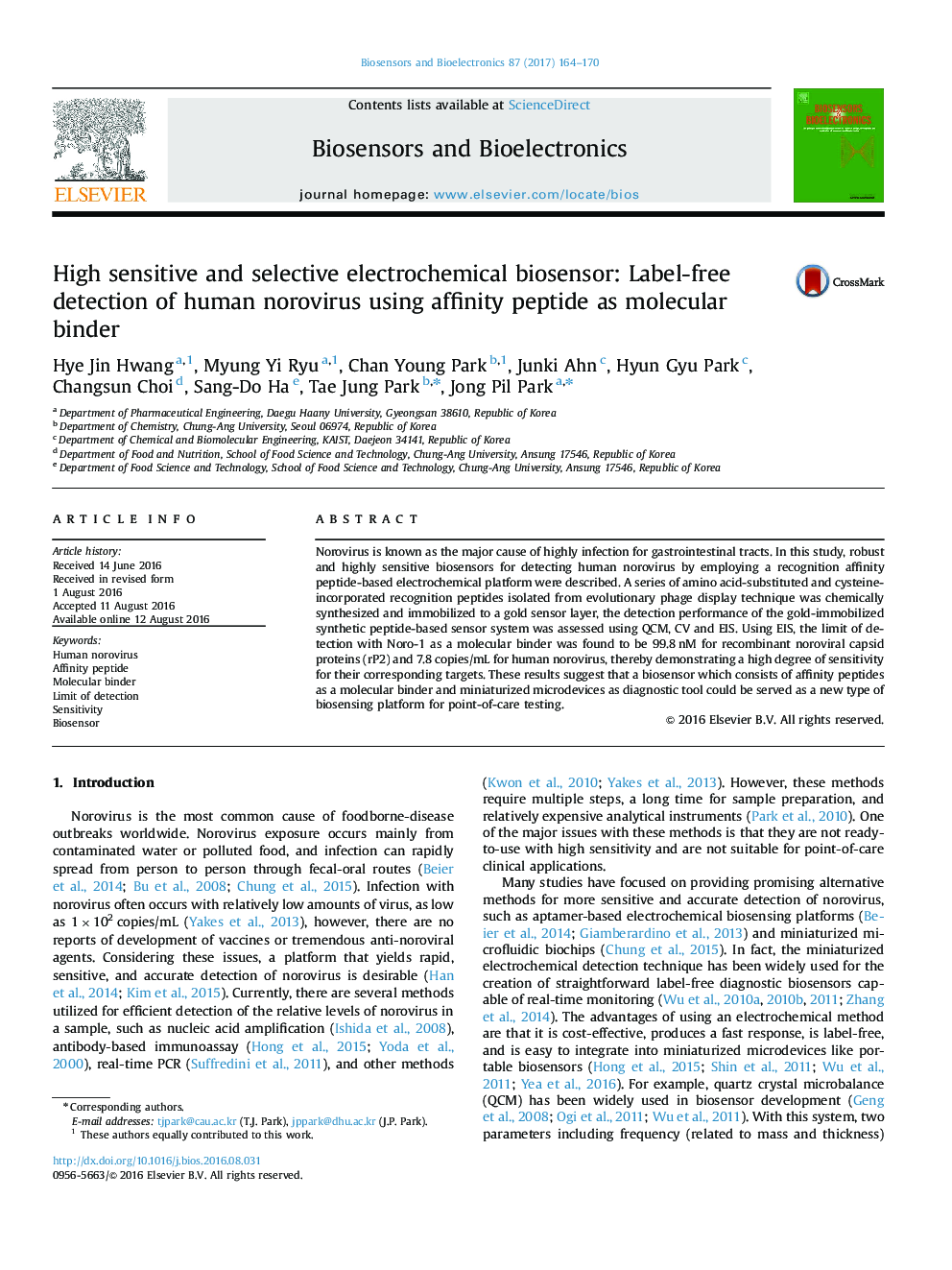| Article ID | Journal | Published Year | Pages | File Type |
|---|---|---|---|---|
| 866174 | Biosensors and Bioelectronics | 2017 | 7 Pages |
•An ultrasensitive and label-free electrochemical biosensor for human norovirus was developed.•The electrochemical detection was performance by CV, QCM and EIS.•The detection limit was found to be 7.8 copies/mL.
Norovirus is known as the major cause of highly infection for gastrointestinal tracts. In this study, robust and highly sensitive biosensors for detecting human norovirus by employing a recognition affinity peptide-based electrochemical platform were described. A series of amino acid-substituted and cysteine-incorporated recognition peptides isolated from evolutionary phage display technique was chemically synthesized and immobilized to a gold sensor layer, the detection performance of the gold-immobilized synthetic peptide-based sensor system was assessed using QCM, CV and EIS. Using EIS, the limit of detection with Noro-1 as a molecular binder was found to be 99.8 nM for recombinant noroviral capsid proteins (rP2) and 7.8 copies/mL for human norovirus, thereby demonstrating a high degree of sensitivity for their corresponding targets. These results suggest that a biosensor which consists of affinity peptides as a molecular binder and miniaturized microdevices as diagnostic tool could be served as a new type of biosensing platform for point-of-care testing.
Graphical abstractFigure optionsDownload full-size imageDownload as PowerPoint slide
